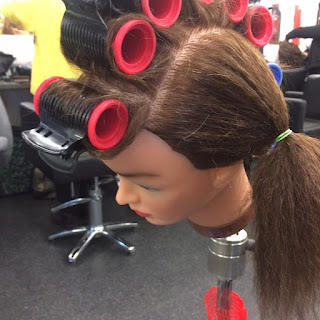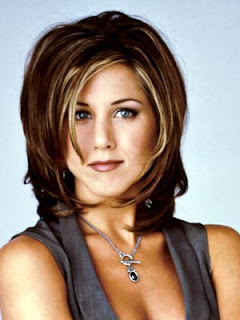1980's Punk! "Back and bigger than ever"
Research -
Hairstyles -
Bangs - There is no doubt the 1980's is one of the most iconic decade when it comes to hair. The 1980's hair looked like they were a lot of hard work to put together for a pretty strange and wacky final result as the hairstyles were very funk and odd in a stylish way. I guess you could say that the 1980's was a decade where it shows that fashion and hairstyles can get bigger! In the 1980's women decided that they wanted even nigger hair than the usual big size. Women also showed off brighter hair colours and many different unique styles. Women achieved the big hair look by perming their hair and using a teasing comb. This was an easy way to achieve big hair. Women would wear big hair as it was very trendy and comfortable.
During the 1980's women were influenced by Madonna and Cindy Lau Per.
Madonna
Madonna during this period was seen n nail-baring mini skirts and cone bras. She represents many things to different people such as originality, controversy and music.
Cindy Lauper
Cindy was known throughout the 80's for her experimental fashion choices. Cindy mixed, watched and clashed colours, patterns textures and styles to create unique looks that resembled 100% her.
Another trendy hairstyle during this period was the side pony tail. Fringes were often cut and feathered back to add a stylish finish. The 'Jersey girl' or the big bangs hairstyles were also worn by women with medium to long hair. These hairstyles were made by layering the women's whole head then setting the hair with rollers and teasing to get the heigh.
There were also the 'Asymmetrical' hairstyle. These hairstyles were the new revolutionary hairstyles of the 1980's period. These cuts were often left longer on one side of the head or formed into the angling bowl shapes.
The mullet hairstyles were worn by many rockstars. The mullet included short layers which go around the face and single-layered hair around the back.
Finally came the Tails hairstyles which were very trendy during the 1980's era. You can achieve the tails hairstyle by leaving a small section at the centred nape of the neck long while cutting the rest of the hair short which was often dyed with contrasting colours. You can still see people wearing these hairstyles now-a-days
Princess Diana - A British 1980's fashion icon -
During this period in 1981, Prince Charles of Wales married Diana Spencer, a young English nanny. During the 1980's Diana was transformed from a shy princess to a huge fashion icon where she was closely followed by the press and was constantly appearing on the cover of women's magazines. All over the world women copied Diana's changing fashion and hairstyles.
Hair in the 1980's was generally bouffant and very heavily. This was in contrast to the long straight, natural styles worn by women in the 1970's. Women would spend many hours taming their hair into the latest style with help from a variety of styling products such as mouse and hairspray.
Punk! - Punk fashion is a non-conformist, rebellious style that came about in the late period of the 1970's and gained its popularity throughout the 1980's. Punk was a reaction against the idealistic peace-loving hippie era, as well a rejection of the consumerist, money obsessed culture of the 80's. Punk was inspired by many rock bands such as the Sex Pistols. Punk fashion was loud, aggressive, angry, and was designed to shock.
Creating the 1980's mohawk! My final Outcome!
1) Using hair grips -
This hairstyle was quite simple and easy to create. To create this style i first sectioned the hair into 4 pieces going down the head. At each section i created a small pony tail and back combed the hair and twisted it to form a bun. I loved creating this hairstyle as it was funned funky. I would love to try out some more 1980's hairstyles and experiment with non permanent hair dye and see what wacky styles i can create.
2) Using heated rollers -
To begin this hairstyle i started by sectioning the hair into three sections. One at the left of the head, one at the right and one at the centre . Once i had finished sectioning i put the side sections in a cont tail to keep it out of the way from the middle section. Afterwards i section the middle and placed rollers going down the hair until i had reached the nape of the neck. Finally i braided both side sections of the hair to make my look funky. Finally to finish this look i took out the rollers and back combed the hair to create the Mohawk.
Final Outcome!
Overall, i feel my final outcome was successful and feel i have achieved the desired 1980's feel to the hair. I feel this was my favourite genre so far so may do some further research and think about using this genre for my assessments as i feel there is a lot of styles you can do.



















































